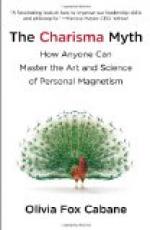This theory, true as to the principal forms which myth successively assumes, is not accurate with respect to the stages of development, and it is also erroneous in some particulars of the actual history of the various mythologies of different peoples.
In the early chapters of this work we have briefly touched on such a development, and the reader must pardon us for returning to the subject, now that we have to give an historical account of the process of evolution. In fact, the fetish, in the general sense of the term, is not the first form of myth which is revealed in the dawn of human life. In order to estimate its positive value, it is necessary to analyze such a conception with greater accuracy, and then to verify it historically with the help of the science of ethnology.
The first manifestations of mythical ideas must be considered in man as an animal; that is, as the result of his spontaneous intercourse with the world, independently of the psychical faculty peculiar to himself, after he had acquired by subsequent evolution of mind and body the faculty and habit of reflection. This first stage does not involve any definite fetish, that is, an immediate belief in a special object which exerts its influence on the human soul, even when it is remote and unseen: such a fetish is a secondary stage in human development. The first mythical representations of animals, and of man, so far as his animal nature is concerned, are not confined to fixed objects, which can be retained in the mind as operative under all circumstances; they are indefinite, and diffused through all the phenomena which are successively perceived and vivified. The unseen wind which rises and falls, the moving cloud, the flash of lightning and roar of thunder, the dawn, the rushing torrent—when any of these things are perceived by animals and primitive men, they are endowed with subjective life and are supposed to act with deliberate purpose; and this is the first form of myth. But when they are not present (I here speak of the animal nature of man) they do not remain in the mind as persistent beings to which the tribute of worship inspired by hope or fear must be paid; these and other phenomena only inspire such sentiments when they are actually present.
It is no vain distinction which I mate between the first vague and intermittent form of myth suggested by phenomena actually present, and that of the first stage of fetish: this distinction marks the difference between the mythical representation of animals and the classifying and reflective process peculiar to man.
Comte was the first to remark, quite incidentally, that animals might sometimes attain to the idea of a fetish; Darwin gave the instance of a dog which was scared by the movement of an open umbrella in a meadow, although he remained quiet when it was unshaken by the wind; and Herbert Spencer, partly accepting these ideas, adduces two somewhat similar instances of the behaviour of dogs. It seems to us that these great men are mistaken on the one hand in assuming that the first essential origin of myth is not to be found in the animal kingdom, and on the other in supposing that these facts have only an accidental value, and that animals only occasionally acquire a vague consciousness of the fetish.




